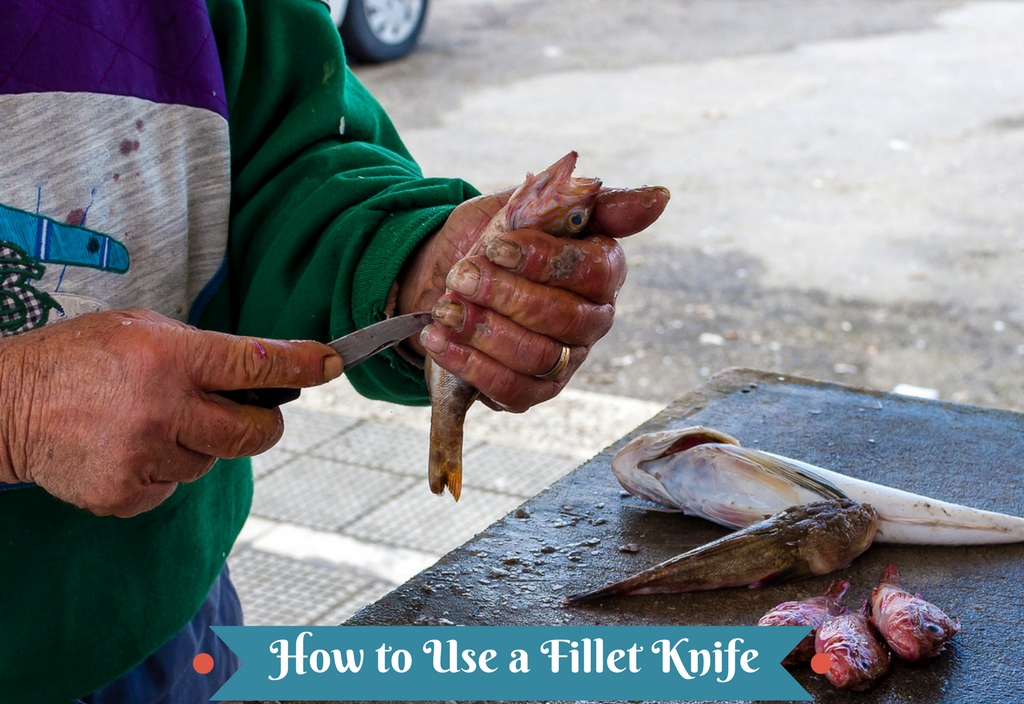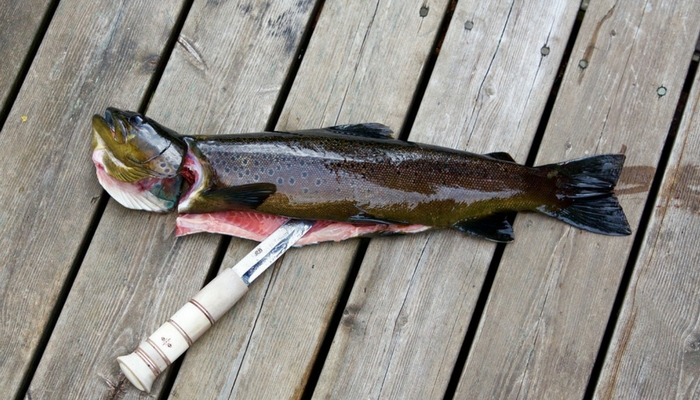 If you are an angler or a chef, then you are probably already well aware of what a fillet knife is and all the different ways in which it can be used. However, if you are just starting out and want to learn a bit more, then read on to learn what a fillet knife is, how it is used, and other useful and helpful information.
If you are an angler or a chef, then you are probably already well aware of what a fillet knife is and all the different ways in which it can be used. However, if you are just starting out and want to learn a bit more, then read on to learn what a fillet knife is, how it is used, and other useful and helpful information.
What is a Fillet Knife?
 Before going any further, we should first discuss what a fillet knife is. Fillet knives are specially designed knives that have a longer and thinner blade and are typically around eleven inches in length, on average. The blades are also made to be extremely flexible.
Before going any further, we should first discuss what a fillet knife is. Fillet knives are specially designed knives that have a longer and thinner blade and are typically around eleven inches in length, on average. The blades are also made to be extremely flexible.
A fillet knife is definitely one of an angler’s favorite tools to have because it requires the right kind of equipment to get the job done quickly and accurately. Filleting a fish can prove to be a very time-consuming task, so you will want to make sure you have a good fillet knife that is sharp, flexible, and ready to go.
Fillet knives are designed to offer good control and should be sharp enough to move easily along the backbone of a fish and slide under the skin of the meat you are filleting. They are an item of convenience for an angler or even a home chef that is trying to cut down on the amount of time it takes to prep the fish.
Uses of a Fillet Knife
While most people think of fish when they hear fillet knife, they can actually be used for a variety of other kitchen tasks including cutting other kinds of meat such as poultry and can easily cut through other foods like vegetables. A fillet knife allows you to quickly and easily blow through the prep process and cuts down on the amount of cooking utensils you will have to use, so you find that you have more time for other tasks like making sure the meal is cooked to perfection.
How to Use a Fillet Knife for Fish
 You have caught the perfect fish on your last trip, and now you are back in the kitchen and ready to cook up your reward. You will want to closely follow these steps to ensure that you are well on your way to properly and safely using your fillet knife on your fish.
You have caught the perfect fish on your last trip, and now you are back in the kitchen and ready to cook up your reward. You will want to closely follow these steps to ensure that you are well on your way to properly and safely using your fillet knife on your fish.
- Start out with the knife blade pointing away from your body, and then begin to cut across the body of the fish and cut up toward the head of the fish. As you are doing so, you should be using the backbone of the fish to help guide the fillet knife across the body
- Next, you will want to begin to take the skin off the body of the fish. To do this, you will hold the fish by the tail with the skin side down. Then hold the knife crosswise and then carefully insert the knife between the skin and the flesh of the fish. You will then again cut in the direction of the head, or where the head used to be
- If you find that the fish you are filleting is a bit on the larger side, filleting the fish may prove to be a bit more difficult or even awkward to accomplish. If the fish is larger, you can open the fish up as you would a book by cutting behind the gills halfway through the body and then cut a slit a few inches down along the top of the fish on the dorsal side
- Following these steps will then allow you to easily separate the fish from the bones with the tip of the fillet knife so that the fish opens up. Once opened up, you can then move the knife along the backbone and finish cutting the fillet
Again, it is important to remember that while you are filleting the fish, you never cut toward your body. Always position the fillet knife properly and cut away from the body as the instructions tell you. Doing so will help to ensure your safety and will provide you with a better fillet.
Before beginning to fillet the fish, you should also remove the head of the fish by making a diagonal cut where the head joins the body. You can also remove the tail of the fish by making a straight cut down at the lower end of the body. This second cut may be a bit harder to accomplish due to all the bones, so you may need to use a bit more force when removing the tail.
Caring for Your Fillet Knives
When you are finished with the fillet knife, you should wash it thoroughly in warm water with a bit of soap by hand; you should never put the fillet knives in the dishwasher. Taking care of and properly maintaining your fillet knives will ensure that they will last you for a lifetime.
Most fillet knives are made from a stainless-steel material that is resistant to tarnishing and rust. The materials will hold up as long as they are not exposed to harsh detergents or scalding water because doing so may damage the handle of the fillet knife and may even begin to pit the blade.
You should also never soak the fillet knife and always make sure to completely dry the knife once it is cleaned and store the knife in a block or a sheath for even more protection.
Sharpening Your Fillet Knife
When it comes time to sharpen your fillet knife, you can use an oilstone or a water or diamond stone to help prevent any damage from occurring to the edge of the blade. You will draw the blade across the stone you will be using and sweep it from heel to tip. To finish sharpening the knife, you will use blade first strokes until the burr disappears.
Conclusion
If you are an angler, then it is important to make sure you have all the necessary gear for each and every fishing trip. Overlooking a good fillet knife will mean losing the convenience and ease of being able to clean and fillet your fresh catch quickly and easily and will add to the overall time it takes to cook up and enjoy all your hard work.
